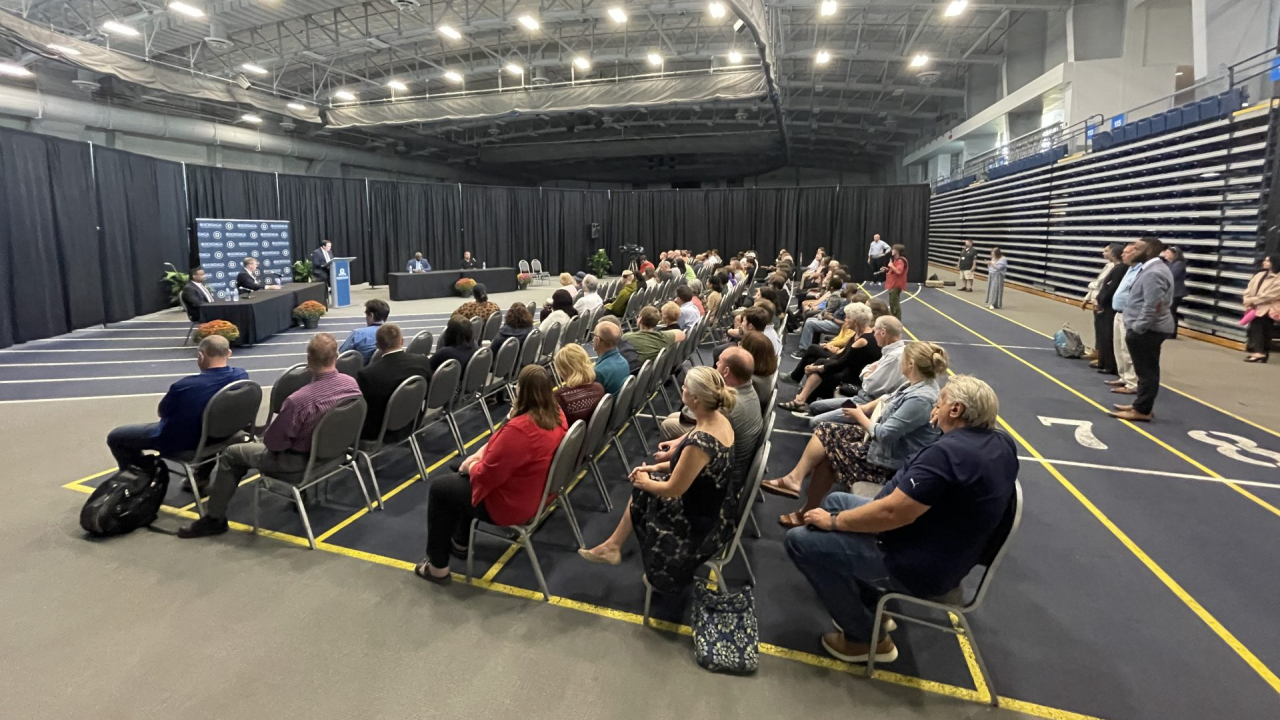
SYRACUSE, N.Y. (NCC News) — Onondaga Community College is not the first institution to prepare for a new industry. The College of Western Idaho did the exact same thing.
In September of last year, Micron expanded its presence in Idaho — committing $15 million to a new facility. In that commitment, the chipmaker turned to the College of Western Idaho to be its “core education partner,” with the two entities working together to train the next generation workers in these fields.
The partnership is something that CWI’s President sees as beneficial to his college’s success — offering young people the opportunity to prepare themselves for the future, and cementing his college’s place in the community.
“Micron has been integral to our origin story,” Gordon Jones, president of the College of Western Idaho, said. “We’re only 14 years old as a community college.”
Citizens, local school district officials, and students from Onondaga Community College joined a four-person panel on Monday, led by WSYR-TV’s Andrew Donovan. One federal official was in attendance — Dr. Reginald Hicks, Head of Facilities Workforce for CHIPS for America.
Hicks has worked with semiconductors for over three decades. During Monday’s panel, some expressed skepticism about the future of Micron in Central New York — scarred by other companies like Carrier coming and going. Hicks stressed the need that semiconductor companies fill in an ever-changing world, with more advanced technology than ever before, along with geopolitical tensions creating the need for domestic stability.
“If you break open any electronic — any electronic, it starts with a chip,” Hicks said. “We’re not going backwards. We’re gonna go forward.”
Onondaga Community College is partnering with Micron to offer training for future Micron jobs, but almost a year after the announcement, programs are only just beginning to take shape. Curriculum integration is something that’s expected to pick up in the near future.
“We are pretty new to semiconductors, so we don’t have a lot of semiconductor specific coursework, but we’re working closely with a number of educators across the nation to integrate that in the future,” Michael Grieb, Chair of the Applied Technology Department at Onondaga Community College, said.
Grieb said that the skills that those training for Micron jobs need aren’t too far off from those of other professions.
It involves a lot of the same techniques that you would need for being a mechanic or anything like that,” Grieb said. “It’s really a lot of fundamentals.”
Other sectors of the economy are set to reap the benefits of the increased workforce from the semiconductor industry. Grieb said that the approach to preparing the next sets of semiconductor creators can not be one-dimensional.
“There’s not just the technicians directly that are employed by Micron that need to be supported… but a whole array of the community that needs to be brought up and educated to do healthcare and construction management and all sorts of things,” Grieb said.
Throughout Monday’s 90-minute panel discussion, the participants focused on the teamwork between all sorts of different entities to achieve a goal — it’s an attitude of “everybody in.”
“Partnerships go as well as the partnership and the willingness of individuals to join in, to believe, and to attempt to collaborate,” Jones said.




